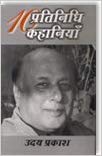Satire can often be a genre which is largely misunderstood, misconstrued, or seen as some literary formulation on the fringes. In English Literary Studies as well as in university curricula in the country, it is not often that satire finds a place of pride or that it could be seen as a mainstream literary genre. However, there have been satirists throughout history. From ancient times, there have been giants of the satirical art, such as Horace, Petronius, Rabelais and Juvenal, among others, who have reiterated the central role of satire in literature as well as society. The problems with the evaluation of satire in literary studies are manifold as it can range from different mainstream modes of satirical writing to caricature as well as lampooning in the written form. Satire, whether of the Horatian kind—meant to evoke laughter—or of the Juvenalian type—meant to be dark, biting and bitter, always aims obliquely at reforming society. It can be oblique, but it always shows a mirror to the society in some way. The mirror could be convex or concave or sometimes a multilayered hall of mirrors as Menippean satire could be.
10 Pratinidhi Kahaniyan by Harishankar Parsai edited by Pallav gives an able glimpse into the oeuvre of one of the greatest satirists of Hindi literature. The Introduction by Pallav, short but insightful, situates Parsai well. The editor is correct in stating that if ‘Premchand is Hindi’s greatest short story writer, then Harishankar Parsai is independent India’s greatest writer of Hindi prose.’ This is not a a sweeping statement as Parsai is a revolutionary author in many ways. It is remarkable that he could leave his indelible mark on Hindi prose at a time when the Nai Kahani (‘New Wave Story’) Movement was at its peak in Hindi with literary stalwarts such as Kamleshwar, Rajendra Yadav, Shekhar Joshi, Bhisham Sahni and Mannu Bhandari. Satire has been used as social commentary by Premchand as well. On the other hand, Hindi literature has had satirists such as Sharad Joshi, Shrilal Shukla and Ashok Chakradhar. What sets Harishankar Parsai apart are a number of aspects, including the fact that he was a satirist to the core, irrespective of the literary sub-genre he used in his writings. The book begins with ‘Bholaram ka Jeev’ (‘Bholaram’s Soul’) and ends with ‘Vaishnav ki Phislan’ (‘How the Vaishnav Slipped’), which is a scathing commentary on the mercantile class in society. ‘Bholaram ka Jiv’ narrates how Chitragupta is worried. Bholaram had died and Yama’s men had his soul but somewhere he escaped. Finally, Narada Muni goes down to earth and discovers at the end of the story that Bholaram’s soul is caught up in the files related to his unreleased pension for his family. While the story is being narrated, there are incisive observations such as when Bholaram’s wife tells Narada, ‘His only ailment was poverty’, and when Narada goes to Bholaram’s office where he worked last, a senior official asks him for a bribe and snatches Narada’s Veena, so that Bholaram’s pension orders could be issued.
Parsai’s satire transcends all modes and walks of Indian society. This is what makes him unique as a satirist. One would like to classify his mode of satire as satire against the ‘system’. So, till there is corruption in the world or in the country, ‘Bholaram’s Soul’ would be valid as a story. It is this universalism in Parsai that makes him stand out as a satirist. As Pallav, the editor, rightly points out that ‘it is difficult as well as challenging to select ten stories out of Parsai’s vast creative oeuvre.’ The selection does leave out some memorable pieces as, for instance, satirical pieces such as ‘Ek Madhyamvargiya Kutta’ (‘A Middle Class Dog’), ‘Ek Viklang Shraddha ka Daur’ (‘An Age of Disabled Faith’) or his story, ‘Torch Bechne Wala’ (‘A Torch Seller’). ‘A Torch Seller’ was Parsai’s satirical take on Osho, who had been his BA student when he was still Rajneesh before he took on godly connotations.

